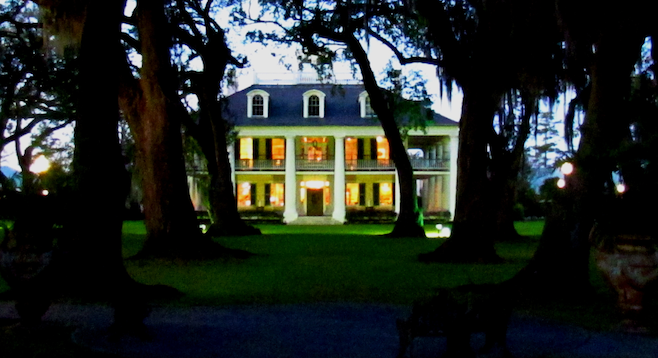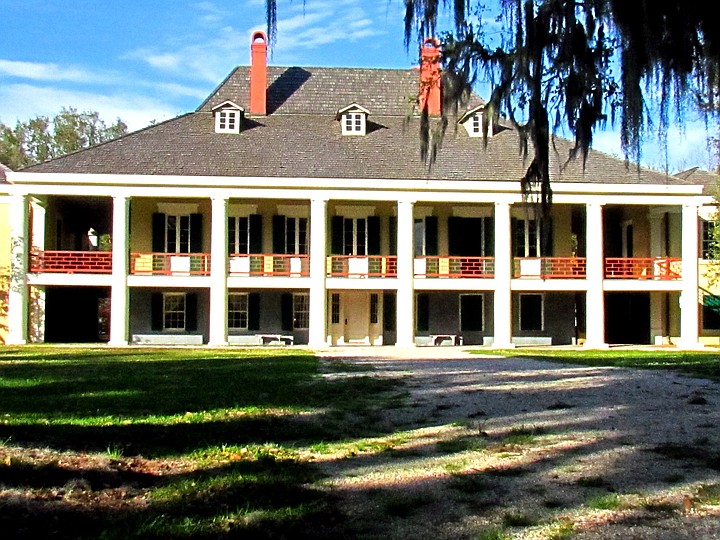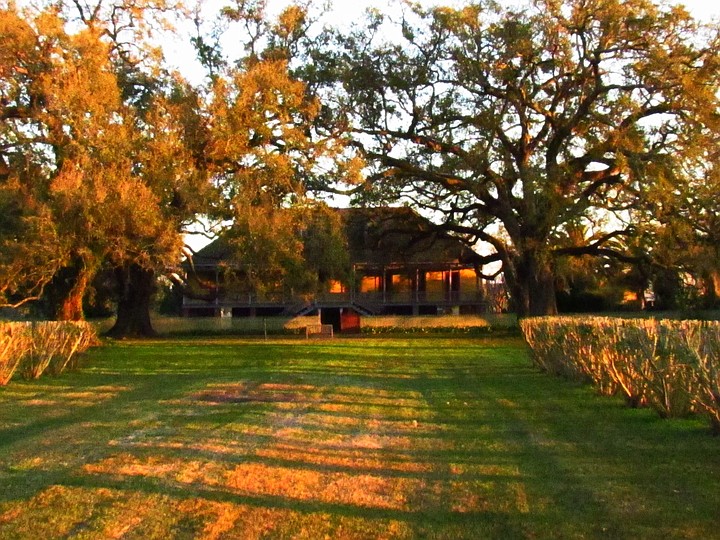 Facebook
Facebook
 X
X
 Instagram
Instagram
 TikTok
TikTok
 Youtube
Youtube

Louisiana’s Great River Road is actually two historic corridors reaching seventy miles from New Orleans to beyond Baton Rouge on either side of the Mississippi.
First Spanish, then French, and finally Creole landowners built their country homes along the river and, with enslaved laborers, proceeded to build fortunes from fields of indigo, then subsequently sugar. The region was referred to as the Blue Coast until it became the Gold Coast; sugar cane replaced the indigo bushes after the noxious processing of the blue dye was determined to be killing off workers.
La Louisiane became Luisiana after Spain acquired the territory from France, and centuries later it is still disputed whether the “French Quarter” in New Orleans is actually even French. There – of course – is also the Irish aspect. Irish immigrants were attracted to the port city founded by Catholic ethnic groups known to be anti-British. And before all these groups were the Native Americans who called the bayou home.
What is undisputed is that all these cultures left their mark throughout the state – although the deed may have changed hands, those who ventured across the Atlantic and staked down roots stayed. They stayed and they bred and they built. Culturally as well as linguistically, the Creole (i.e., American-born, non-English-speaking colonialists from Latin-based countries like France or Spain) as well as the displaced French-speaking Acadian, refugees who are now called Cajuns, are indicative of this process, as is the patois they speak.

Even along the river road where the city’s wealthy found refuge from the urban bustle and stifling heat, characteristics distinctly attributed to Louisiana adorn the landscape.
But it should be noted that the area Mark Twain once referred to as “a most home-like and happy-looking region” is now studded with refineries, chemical plants and paint manufacturers. Between the modern-day industrial ugliness you'll find antiquated restored grand homes, many of which sat vacant and decaying for decades. And surrounding them are peeling shacks that may well have been the original slave quarters, but appear to now house gangling gangsters leaning on low-riding Cadillacs.
There are a few other factors to consider when romanticizing this designated scenic byway. Very necessary 20-foot dikes have eliminated the water view. And, although many of the plantation houses built by wealthy colonial aristocratic farmers are monumental antebellum mansions adorned with deep, broad, wrap-around pillared porches, not all are equally opulent.
So, as quaint as it may sound to drive along the Great Mississippi River Road for a taste of Southern history, the experience isn’t going to come close to the one Twain had more than a century ago.
Nonetheless, if you visit without such expectations, you won't be disappointed once on the grounds of the various historic sites. Hollywood doesn’t repeatedly return to shoot movies here without due cause. The gardens, the oak groves dripping Spanish moss, and the delicious luxury displayed at Houmas House and the ornate San Francisco are lure enough.

From Destrehan Plantation (above), whose slaves had been involved the largest slave revolt in American history, to Laura Plantation (left), the River Road offers you days of cultural tourism opportunities.
Besides providing tours – some even romantic evening tours – many of these plantations such as the Nottoway, Oak Alley and Ormond operate as inns and/or restaurants. Others not open to the public are National Historic Sites. The Poche Plantation even offers “Cajun Country Camping.”


Louisiana’s Great River Road is actually two historic corridors reaching seventy miles from New Orleans to beyond Baton Rouge on either side of the Mississippi.
First Spanish, then French, and finally Creole landowners built their country homes along the river and, with enslaved laborers, proceeded to build fortunes from fields of indigo, then subsequently sugar. The region was referred to as the Blue Coast until it became the Gold Coast; sugar cane replaced the indigo bushes after the noxious processing of the blue dye was determined to be killing off workers.
La Louisiane became Luisiana after Spain acquired the territory from France, and centuries later it is still disputed whether the “French Quarter” in New Orleans is actually even French. There – of course – is also the Irish aspect. Irish immigrants were attracted to the port city founded by Catholic ethnic groups known to be anti-British. And before all these groups were the Native Americans who called the bayou home.
What is undisputed is that all these cultures left their mark throughout the state – although the deed may have changed hands, those who ventured across the Atlantic and staked down roots stayed. They stayed and they bred and they built. Culturally as well as linguistically, the Creole (i.e., American-born, non-English-speaking colonialists from Latin-based countries like France or Spain) as well as the displaced French-speaking Acadian, refugees who are now called Cajuns, are indicative of this process, as is the patois they speak.

Even along the river road where the city’s wealthy found refuge from the urban bustle and stifling heat, characteristics distinctly attributed to Louisiana adorn the landscape.
But it should be noted that the area Mark Twain once referred to as “a most home-like and happy-looking region” is now studded with refineries, chemical plants and paint manufacturers. Between the modern-day industrial ugliness you'll find antiquated restored grand homes, many of which sat vacant and decaying for decades. And surrounding them are peeling shacks that may well have been the original slave quarters, but appear to now house gangling gangsters leaning on low-riding Cadillacs.
There are a few other factors to consider when romanticizing this designated scenic byway. Very necessary 20-foot dikes have eliminated the water view. And, although many of the plantation houses built by wealthy colonial aristocratic farmers are monumental antebellum mansions adorned with deep, broad, wrap-around pillared porches, not all are equally opulent.
So, as quaint as it may sound to drive along the Great Mississippi River Road for a taste of Southern history, the experience isn’t going to come close to the one Twain had more than a century ago.
Nonetheless, if you visit without such expectations, you won't be disappointed once on the grounds of the various historic sites. Hollywood doesn’t repeatedly return to shoot movies here without due cause. The gardens, the oak groves dripping Spanish moss, and the delicious luxury displayed at Houmas House and the ornate San Francisco are lure enough.

From Destrehan Plantation (above), whose slaves had been involved the largest slave revolt in American history, to Laura Plantation (left), the River Road offers you days of cultural tourism opportunities.
Besides providing tours – some even romantic evening tours – many of these plantations such as the Nottoway, Oak Alley and Ormond operate as inns and/or restaurants. Others not open to the public are National Historic Sites. The Poche Plantation even offers “Cajun Country Camping.”
Comments